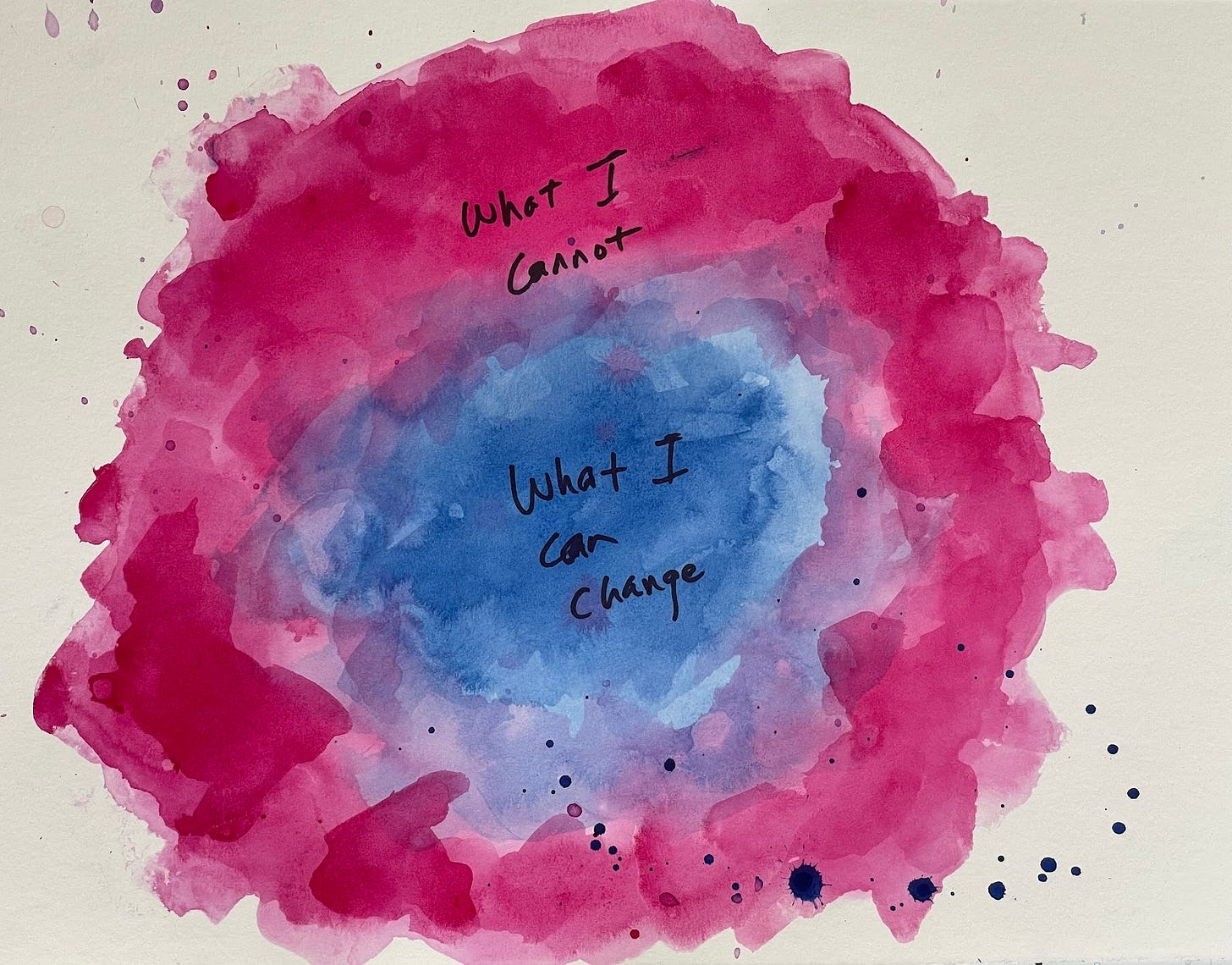I was given the keys to my new office that I will be occupying as chair last week. It’s a huge office - about 2.5 X larger than the office I have occupied since I arrived at UNH in January of 2015. It is big enough, in fact, that once I had rearranged some of the furniture, I was able to put a 5x8 conference table I scrounged from TLW’s firm (they moved offices and had to get rid of a bunch of furniture). My father helped me put the table together on Saturday and as we were leaving he casually said, “That’s a really nice office”, to which I replied, “I hope I can live up to the implied responsibilities,” to which he wisely replied, “There are things you can control and things you cannot. You’ll do your best.”
I’ve written several FITW posts using this concentric circle diagram (e.g., here), talking about the limits of our influence, and this is how I usually think about such things. What can I control? What can I change? I have the most influence over my self, some influence over family, some (but less) influence over friends, and so forth, progressively arriving at a point where I can worry about things - like the 2024 election, the wars in Ukraine and Israel, CCP malevolence - but have no meaningful influence over the outcome. To that end, to minimize worry, one should focus most of one’s efforts on the things one can actually control.
This is the spirit of the Serenity Prayer often associated with 12-step programs such as Alcoholics Anonymous:
God, grant me the serenity to accept the things I cannot change, courage to change the things I can, and wisdom to know the difference.
It’s a good prayer. It reflects deep wisdom in a few words. It is a central kernel to Stoicism and Buddhism as I understand them. It’s also what my father was conveying in his own short response to me.
But as I spent the rest of the morning doing yard work, I was thinking about our exchange and thinking about this diagram and decided the concentric circles are generally correct, but the borders between what we can control and what we can’t just aren’t that clean and they aren’t that easily knowable. Instead, the circles are really more like clouds, and that is what I tried to capture this morning in the above water color.
There is a sort of pure center of blue that is in my (your, our) control and we can change. But as we push out to the edges of our control, things get purple - maybe you have control, maybe you don’t. Maybe you have influence. Maybe things will go sideways if you try to change things in the purple space - it’s hard to know. In the pure red we have no control. Except sometimes we do - which is why I splashed some blue dots. The problem is one of knowledge - we often don’t know if there is a dot there or not. In fact, I would say it’s pretty hard to see the contours of the colors unless you reach out and try. You can guess, based on the distance from the self, how much control you are going to have, and you will probably be pretty right, but you can only see definitively by action and time.





